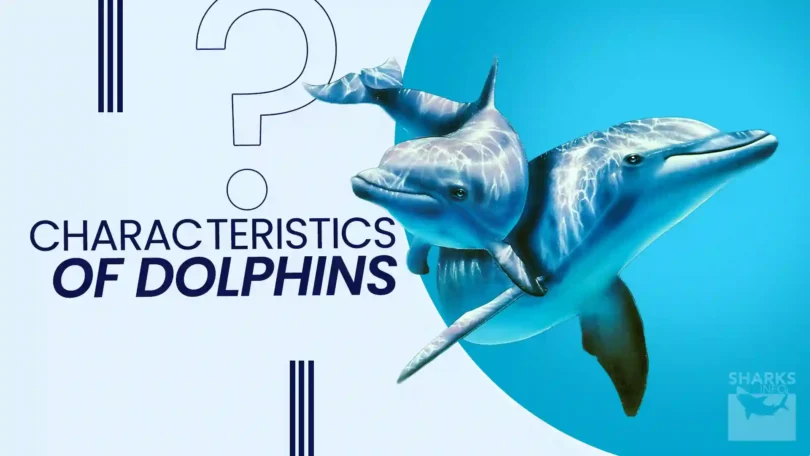When we think of intelligent, playful, and fascinating marine animals, dolphins often come to mind. What makes them captivating is the assortment of unique attributes and characteristics that differentiate them from other marine creatures. Let’s dive in and explore what are the characteristics of dolphins.
General Description
Dolphins are highly evolved marine mammals known for their agility, intelligence, and sociability. While often pictured as silhouetted, leaping figures against the sunset, there’s much more to these enigmatic creatures. They possess a streamlined body adapted for fast swimming. Their unique, conical teeth are designed for capturing prey, and a blowhole on top of their head facilitates their breathing process.
Dolphin Species
Remarkably, there are approximately 42 different species of dolphins. They inhabit various environments around the globe, from oceanic expanses to coastal areas and even some freshwater rivers.
The most recognized species is the bottlenose dolphin, famous for its appearances in marine park performances and television shows. However, other species like the Atlantic spotted dolphin, spinner dolphin, and Risso’s dolphin each offer unique traits and behaviors that add to the rich tapestry of dolphin diversity.
Size and Weight
Dolphins vary greatly in size across species. For instance, the smallest of all, Maui’s dolphin, measures about 1.2 meters in length and weighs around 40 kilograms. On the opposite side, we encounter the killer whale or orca, the largest dolphin species. An adult orca can reach lengths of up to 9.5 meters and weigh as much as 10 tons.
Dolphin’s Fins
Fins are an integral part of a dolphin’s anatomy. Each fin plays a unique role in the dolphin’s movement and balance in the water.
Dorsal Fin: The dorsal fin is situated on the dolphin’s back. It plays a crucial role in maintaining the stability of the dolphin while it swims and helps prevent the dolphin from rolling in the water.
Pectoral Fins: Situated on both sides of the dolphin’s body, these fins serve the purpose of steering and halting for dolphins. Additionally, they serve as a tactile tool used to touch and feel the environment, much like our hands.
Tail Fin (Fluke): The tail fin, also known as the fluke, is composed of two lobes and made entirely of strong, fibrous connective tissue (it lacks bones or muscles); the fluke propels the dolphin forward in the water. The up-and-down motion of the fluke, as opposed to side-to-side movement in fish, is a characteristic feature of dolphin swimming.
Dolphin’s Behavior
Dolphins exhibit a wide array of behaviors that underscore their intelligence and social nature. From sophisticated communication methods to impressive hunting techniques, these behaviors offer insight into their complex world.
Communication Methods
Dolphins are recognized for their complex communication methods. Their primary means of communication are vocal, visual, and physical.
1: Vocal Communication
Dolphins generate a diverse range of sounds, encompassing clicks, whistles, and burst-pulsed sounds. These sounds serve various purposes, such as facilitating social interaction or expressing emotional states.
2: Visual Communication
Dolphins also use body movements as a form of communication. These behaviors can involve jumping out of the water, hitting the water surface with their tails, and crashing their bodies onto the water, also known as breaching. These behaviors can communicate different messages, from showing excitement to warning others of potential danger.
3: Tactile Communication
Physical contact is an essential part of dolphin social interaction. They are often seen rubbing against each other, which can strengthen social bonds and express comfort or familiarity.
Social Structure
Dolphins are known for their highly social behavior. Usually, they reside in communities called pods, which can consist of a handful of members to hundreds of individuals in certain species. These pods are often organized hierarchically, with complex relationships and roles within the group.
Social behavior in dolphins is exhibited in various ways, such as cooperative hunting, where dolphins work together to corral fish. They also display protective behaviors like looking after sick or injured pod members, showcasing their empathetic nature.
Conclusion
There’s no denying that dolphins are fascinating creatures. Their unique physical characteristics, combined with their intelligence and social behavior, make them one of the ocean’s most loved inhabitants. Understanding the characteristics of dolphins does more than satisfy our curiosity about these fascinating creatures.







